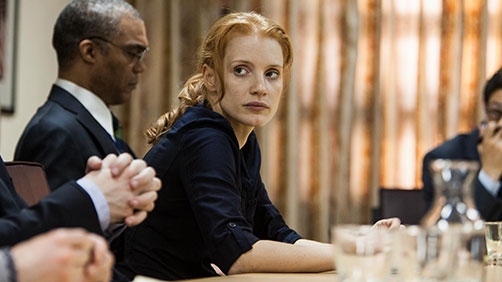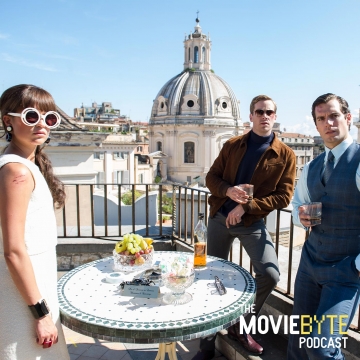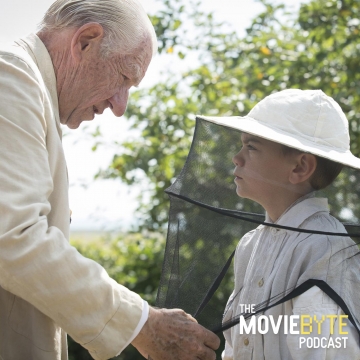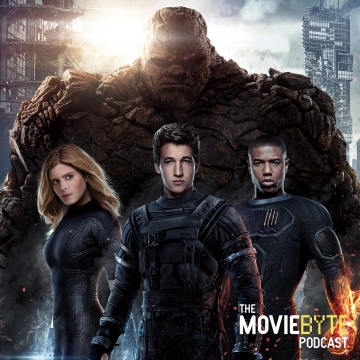
In 2009, director Kathryn Bigelow gave us The Hurt Locker, a tour de force Iraq war film that blew the socks off audiences and critics alike. Her latest film, Zero Dark Thirty, is generating a similar buzz. Tense, intelligent, and well acted, this compelling dramatization of the decade-long hunt for Osama bin Laden has earned Ms. Bigelow a heaping of praise – and some controversy to go along with it.
“You’re Going To Kill Him For Me.”
Jessica Chastain leads the cast as Maya, a young CIA operative dedicated to uncovering the whereabouts of bin Laden. With an elite team of intelligence and military personnel at her back, Maya chases one lead after another for eight years… without success.
At last, in 2011, she finds her man, tucked away in a compound in Abbottabad, Pakistan. Her superiors are skeptical due to the lack of photographic evidence, but Maya refuses to budge. “I know he’s there,” she says. And that’s that.
Weeks pass. A raid is finally approved, and SEAL Team Six steps into the picture. “Quite frankly, I didn’t even want to use you guys,” Maya tells them. “I wanted to drop a bomb. But people didn’t believe in this lead enough to drop a bomb. So they’re using you guys as canaries. In theory, if bin Laden isn’t there, you can sneak away and no one will be the wiser. But bin Laden is there. And you’re going to kill him for me.”

10 Years In 2.5 Hours
With the help of screenwriter/research collaborator Mark Boal, Bigelow manages to pack over ten years worth of information into an engaging two and a half hour film – a worthy achievement in and of itself. The pacing is a thing of beauty, cutting confidently between the hunt and Maya’s own inner struggles without ever losing its stride.
The film opens with a black screen as audio clips from 9/11 begin to play. Frantic phone calls. Wailing sirens. Desperate cries for help that go unanswered. It’s a grim and thoroughly chilling way to begin, but it proves crucial in establishing the tone and context of what follows.
Having set the stage, Bigelow dives headlong into a three-act recreation of one of the greatest manhunts the world has ever seen. It’s an immersive experience: grueling, detailed, and nerve-wrackingly tense. The first two hours are like the slow, ominous climb made by a roller-coaster as it moves relentlessly toward the peak of the track. Then comes the plunge, the final half hour. In it, the tension of all that has come before finds bloody release in the raid that ends bin Laden’s life. It’s done swiftly, quietly, without patriotic fanfare or the slightest hint of rah-rah triumphalism. As we watch the members of SEAL Team Six stand over the terrorist leader’s bullet-riddled corpse, we feel only relief - relief, and a sobering sense of gratitude that the hunt is finally over.
Controversial
The controversy surrounding Zero Dark Thirty has largely to do with the film’s graphic portrayal of torture. Some have labeled it a propaganda piece that justifies questionable interrogation practices. There is, in fact, very little to back up such an accusation as Bigelow seems more interested in simply showing us what happened – ugliness and all – than she is in offering commentary on it.
This isn’t to say she’s entirely neutral. As David Roark so aptly observes in his review for Christianity Today,
Bigelow… unavoidably reveals some bias by merely portraying the story. Even more, as an artist, she is forced to choose expressions and depictions of the events, from torture scenes to the final bloody raid. Zero Dark Thirty only seems “neutral” because Bigelow, working with a script from Mark Boal, proves conflicted in her stance, caught between a sense of justice and a remorse for the detrimental implications of the operation.
But it’s that mixed stance—a conflicted view held by many—that makes the film work so well. While Bigelow and Boal—who did extensive research—claim to stay true to the details, the film is truer in a different sense, in that it seems to represent their own outlook on the War on Terror, through the lens of this bin Laden narrative. It’s a perspective that’s willing to acknowledge that it doesn’t pretend to have it all figured out, but admits to the complexities—because war, particularly this one, is no simple matter.

Like The Hurt Locker, Zero Dark Thirty is a harsh and unsettling piece of cinema. But it’s an important one, and it’s asking important questions, forcing the viewer to think hard about some difficult issues. Bin Laden’s death was a good thing, no doubt – but what about the uglier aspects of the operation? Did the end justify the means?
The film gives us no answers, but the questions remain, getting under our skin, refusing to disappear.


